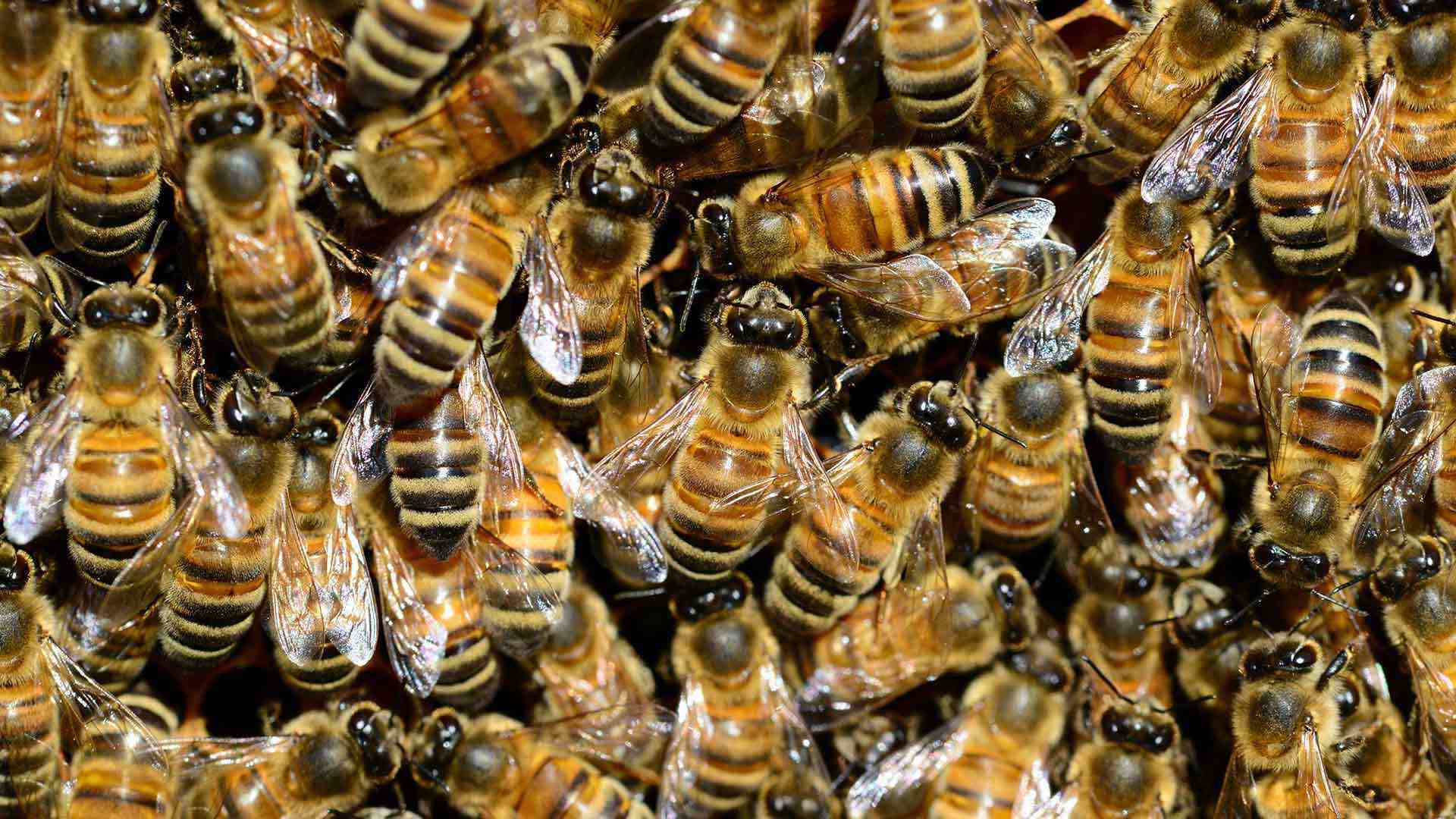- November 14, 2022
- By Kimbra Cutlip
The lifespans of honey bees living in laboratory environments has dropped about 50% over the last 50 years, hinting at possible causes for the worrisome trends across the beekeeping industry, according to new research by University of Maryland entomologists.
The study published today in the journal Scientific Reports is the first to show an overall decline in honey bee lifespan that is potentially independent of environmental stressors. The findings hint that genetics may be influencing problems like increased colony loss and reduced honey production.
Colony turnover is an accepted factor in the beekeeping business, as bee colonies naturally age and die off. But the higher rates of the past decade mean U.S. beekeepers have to replace more colonies to keep operations viable. In an effort to understand why, researchers have focused on environmental stressors, diseases, parasites, pesticide exposure and nutrition.
When scientists modeled the effect of today’s shorter lifespans independent of environmental factors on beehives, however, the results corresponded with real-world observations of U.S. beekeepers.
“We're isolating bees from the colony life just before they emerge as adults, so whatever is reducing their lifespan is happening before that point,” said Anthony Nearman, a Ph.D. student in the Department of Entomology and lead author of the study. “This introduces the idea of a genetic component. If this hypothesis is right, it also points to a possible solution. If we can isolate some genetic factors, then maybe we can breed for longer-lived honey bees.”
Nearman noticed the decline in lifespan while conducting a study with entomology Associate Professor Dennis vanEngelsdorp of standardized protocols for rearing adult bees in the laboratory. Replicating earlier studies, the researchers collected bee pupae from honey bee hives when the pupae were within 24 hours of emerging from the wax cells they are reared in. The collected bees finished growing in an incubator and were then kept as adults in special cages.
Nearman was evaluating the effect of supplementing the caged bees’ sugar-water diet with plain water to better mimic natural conditions when he noticed that, regardless of diet, the median lifespan of his caged bees was half that of caged bees in similar experiments in the 1970s—17.7 days now versus 34.3 days. This prompted a deeper review of published laboratory studies over the past 50 years.
“Standardized protocols for rearing honey bees in the lab weren’t really formalized until the 2000s, so you would think that lifespans would be longer or unchanged, because we’re getting better at this, right?” Nearman said. “Instead, we saw a doubling of mortality rate.”
Although a laboratory environment is very different from a colony, historical records of lab-kept bees suggest a similar lifespan to colony bees, and scientists generally assume that isolated factors that reduce lifespan in one environment will also reduce it in another. Previous studies had also shown that in the real world, shorter honey bee lifespans corresponded to less foraging time and lower honey production. This is the first study to connect those factors to colony turnover rates.
When the team modeled the effect of a 50% reduction in lifespan on a beekeeping operation, where lost colonies are replaced annually, the resulting loss rates were around 33%. This is very similar to the average overwinter and annual loss rates of 30% and 40%, respectively, reported by beekeepers over the past 14 years.
Nearman and vanEngelsdorp noted that their lab-kept bees could be experiencing some sort of low-level viral contamination or pesticide exposure during their larval stage, when they’re brooding in the hive and worker bees are feeding them. But the bees have not shown overt symptoms of those exposures and a genetic component to longevity has been shown in other insects such as fruit flies.
The next steps for the researchers is to compare trends in honey bee lifespans across the U.S. and in other countries. If they find differences in longevity, they can isolate and compare potential contributing factors such as genetics, pesticide use and presence of viruses in the local bee stocks.
